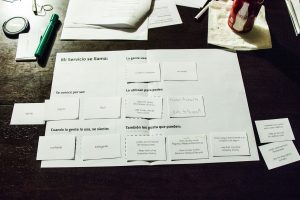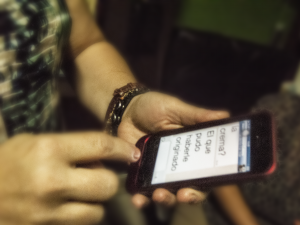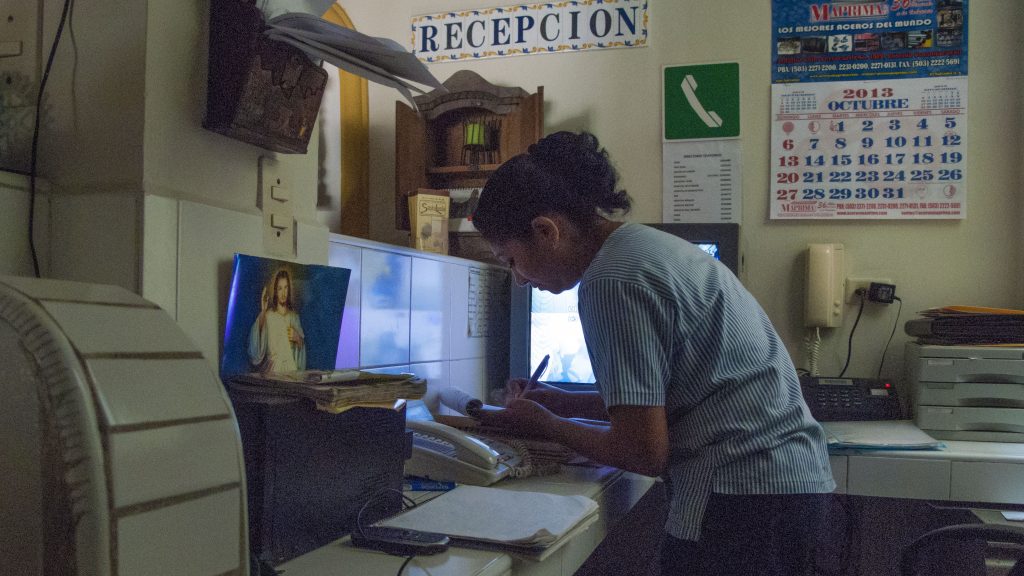CASE STUDY: MEDICSANA – RESEARCH
This article is part of a larger microsite about the MedicSana project. Check out other articles on the homepage.
By far my greatest challenge – and greatest passion – with MedicSana has been to establish a tight feedback-look between our target doctor users, and our development process.
I discuss process in detail with a lot of jargon in my other posts, but this page reads a little more like a story, a little longer than my post about our research interviews with remittance senders in Texas, capturing my initial naiveté and hard lessons learned when we try to put theory into practice.
Design Research, like most professional skills, is more of a muscle that grows than a checklist to implement. The challenges tend to be as much in the logistics as in the practice itself, and these challenges multiply when layered into an early stage start-up with an international focus.
Doing research for MedicSana has been one of the most rewarding aspects of my career so far, so if you’re interested in talking to me more about any aspect of the process, reach out to me on linkedin. At the end, I’ll sum up some of my learnings for managing a team on a project like this.
Though I didn’t know the term at the time, I’ve adopted the term “User Group” from Mike Cohn’s excellent book User Stories Applied to refer to a formal group of users that can be asked to give feedback about a product or service throughout it’s production, launch, and maintenance.
The best laid plans
When we started MedicSana, I had one specific goal: always build products with the end user in mind. I came out of design school right as the first generation of “human-centered” designers were learning tough lessons about designing products for international markets and the practice of design research (DR) was helping the industry learn the humility it needed to climb out of a slight existential crisis. Specifically, designers were beginning to learn that “social good” design a cultural – not simply mechanical – challenge. As an industry, we were learning it is wiser to design “with” rather than “for” people.
This philosophy sounded perfect for a young designer with frog on his resume, strategy books on his shelf, and passport stamps on his mind. I’d spent the years before following the researchers around, reading every book, attending every brown-bag, and fighting to get on as many DR projects that I could. I’ve always been a curious person, but I started trying to shift my conversational tone and tactics to get people to talk more at parties and social situations. “Why do you think that is?” became a staple of my rhetoric.
So, naturally, I jumped at the first project that presented itself – a little medical project for El Salvador, a tiny Central American country that I probably wouldn’t have been able to locate on a map. My partner, Alex, was from there, and worked for a large local tech company in healthcare sales, so throwing together enough research to build a “Minimum Viable Product” and start-up pitch should be a piece of cake… right?
Thus, I joined MedicSana.
First Try: Organize Remote, Recorded Interviews

The original idea for MedicSana was to find a business model somewhere in between Latin American Doctors and latino remittance senders in the US. It was a challenge, but my research partner Jona and I were able to eventually get enough interviews with latino remittance senders in our local Texas, but with no money in the bank and full time jobs, interviewing doctors in our target launch market, San Salvador, El Salvador, was going to be a challenge.
At this point in the project, we needed a couple of things. First, we needed to validate Alex’s assumptions that this would be a lucrative enough market to raise funding, and second, we needed to understand what type of product would be valuable enough to gain traction.
I, of course, did what I was trained to do and sat down and wrote an entire interview script based on these two goals and Jona quickly translated it into Spanish. We were lucky in that Alex would be down in El Salvador soon, so he traveled down with camera and interview script in hand. Due to the timing and short notice, however, he was only able to get one interview with a dentist. He sent Jona and I the file and we went to work with what we had, but one interview would not be enough to pitch a company on and we all knew it.
Second Try: Kyle goes to El Salvador
In the meantime, we tried to dream up other ways to talk to doctors remotely. It wouldn’t be as enlightening as in-person interviews, but at least we may be able to get some sort of exploratory research done. It was easy enough to pull primary research information on El Salvador’s remittances and healthcare statistics from Pew Research and the World Health Organization, but these stats would only help us make a case that something was needed – it gave no guidance about what would actually be able to build traction in the market. Designers are trained to come up with a lot of well-crafted ideas, nothing in the “design” toolbox helps us differentiate ‘good’ ideas from ‘bad’ ones without market feedback in some way or another. I distinctly remember staying up all night one night with Jona putting together a brochure for a new company, MedicSana, that looked quite professional but never actually stated exactly what it’s value proposition was. Since none of us were developers, simply building something and launching it wouldn’t be an option, but research may uncover a need compelling enough that we could raise the funds and then hire the developers.
So a few months later, Alex chipped in the cash to buy me a plane ticket so I could come with him on the next El Salvador trip. I’d come prepared with another interview script, a few low-fidelity prototypes I could get some feedback on, and my little camera because I’d read somewhere that El Salvador had some crime problems.
 This trip was a bit more fruitful, we were able to interview two doctors in place – a pediatric dentist and a doctor who ran a geriatric hospital – and have some meals with two more. With only one week, this would be the best that we were going to get, so we made the most of it. The scarcity of interviews didn’t really garner enough data to nail down a concise value proposition, but we were able to gather enough insights to make some general assumptions and see that there was an opportunity here if we could capture it.
This trip was a bit more fruitful, we were able to interview two doctors in place – a pediatric dentist and a doctor who ran a geriatric hospital – and have some meals with two more. With only one week, this would be the best that we were going to get, so we made the most of it. The scarcity of interviews didn’t really garner enough data to nail down a concise value proposition, but we were able to gather enough insights to make some general assumptions and see that there was an opportunity here if we could capture it.
Most importantly for me, I could now locate the tiny country on the map and was able to gain the type of invaluable (and indescribable) context for a place that only being their in person can garner. El Salvador has a very particular mixture of breathtaking beauty and unmatched ugliness that one can only begin to fathom through context and conversation.
Tip-Toeing Forward
We would undoubtedly need more research, but mixing what we were able to learn in El Salvador with our insights from the immigrants in Texas we were able to create a narrative that would help us gain funding through a local healthcare company with an international pedigree that would become our “strategic partners.”
As a part of our plan, we allocated a milestone on our roadmap to continued research that we’d hoped to share with our strategic partners. They too were interested in understanding how to pull qualitative market insights into their organization, and joint research would give us both the opportunity to not only gain market insights, but experiment with practice and method.
Traditionally speaking, design research is done at the beginning of a project while some user testing might before launch where minor changes can be made. As “lean startups” start to take hold on the industry, though, companies are learning that user input through the entire process is the easiest way to prove out what is actually useful before large investments are made. This philosophy is simple enough as long as the American middle class is designing products for the American middle class (though certainly not easy), but what happens when user feedback isn’t as simple as walking “outside the building” to find a “user?” Suddenly, applying the traditional Design Research methodology is incomplete, but the traditional Lean model requires a lot more overhead.
Combining the capital of our investors with my personal background in design research (and personal ability and desire to up and move to foreign places) would have provided the opportunity to experiment with some new hybrid models. We closed our funding, but due to some internal business constraints, our strategic partners weren’t able to engage in research activities after all, so we were on our own again.
On the next page, I pack my bags for good to become a digital nomad!

